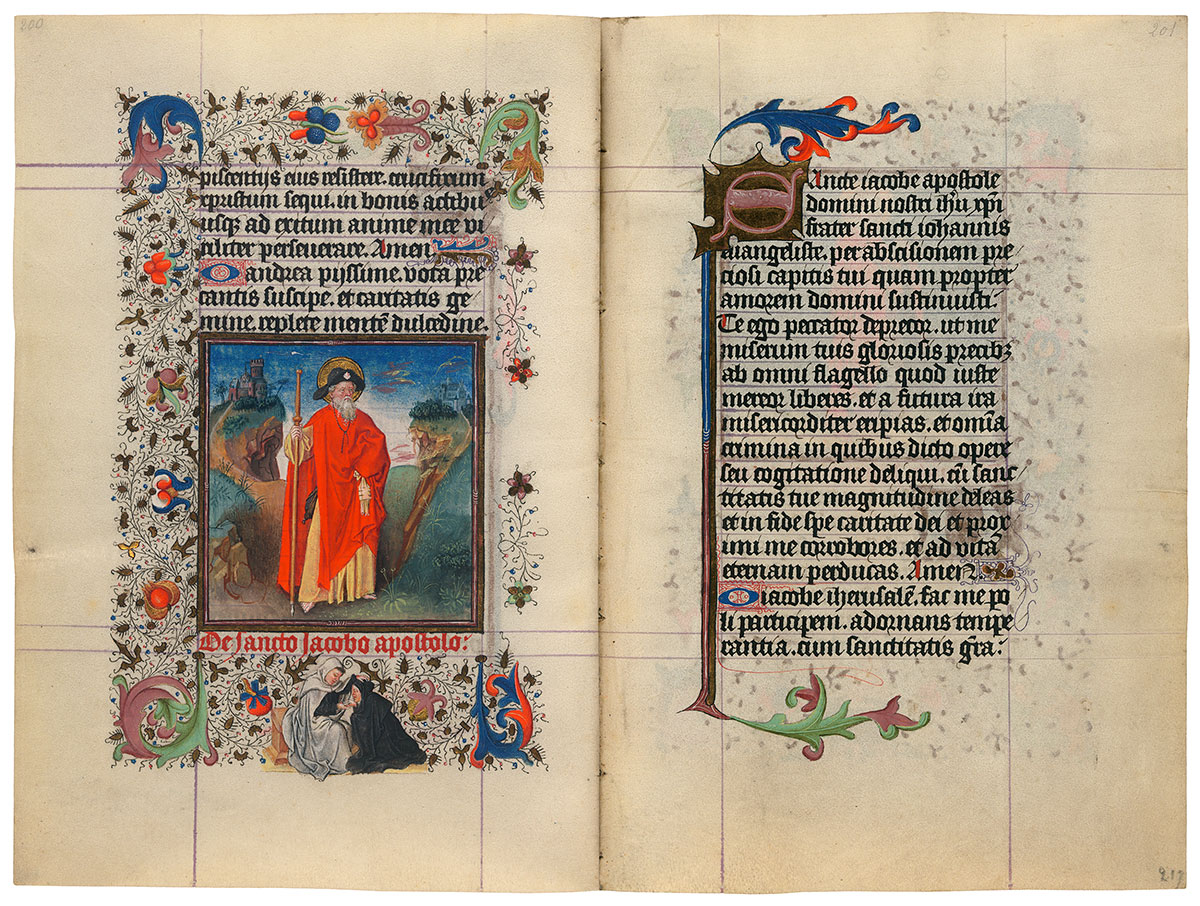
St. James the Major
Purchased on the Belle da Costa Greene Fund with the assistance of the Fellows, 1963
The relics of St. James lie in Santiago de Compostela in Spain, a major site for Christian pilgrims of the middle ages and today. Standing in a landscape, the depth of which suggests a long journey, the apostle is dressed for pilgrimage. The wide brimmed hat with mounted shell, the walking staff, and the pouch at his side are all attributes of medieval pilgrimage; even the girdle book he carries is bound for travel in an enveloping binding. Puzzling are the two small figures in the border: a kneeling woman in black who gives something to a seated man in white cloak. The woman may be a pilgrim receiving a blessing before setting out on her journey. A similar figure appears in the borders of pages 206 and 221. The pair resembles the two figures praying in the Deathbed scene (p. 180).
Suffrages
Suffrages are short prayers to individual saints. As protectors of medieval people, saints were their doctor in plague, their midwife at childbirth, their guardian when traveling, and their nurse during toothache. If the Virgin was the figure to whom one addressed the all-important petition for eternal salvation, it was from saints that one sought more basic or temporal kinds of help. While the Virgin became, as the Mother of God, almost a goddess herself, saints retained more of their humanity and thus their approachability.
Image courtesy of Faksimile Verlag Luzern
